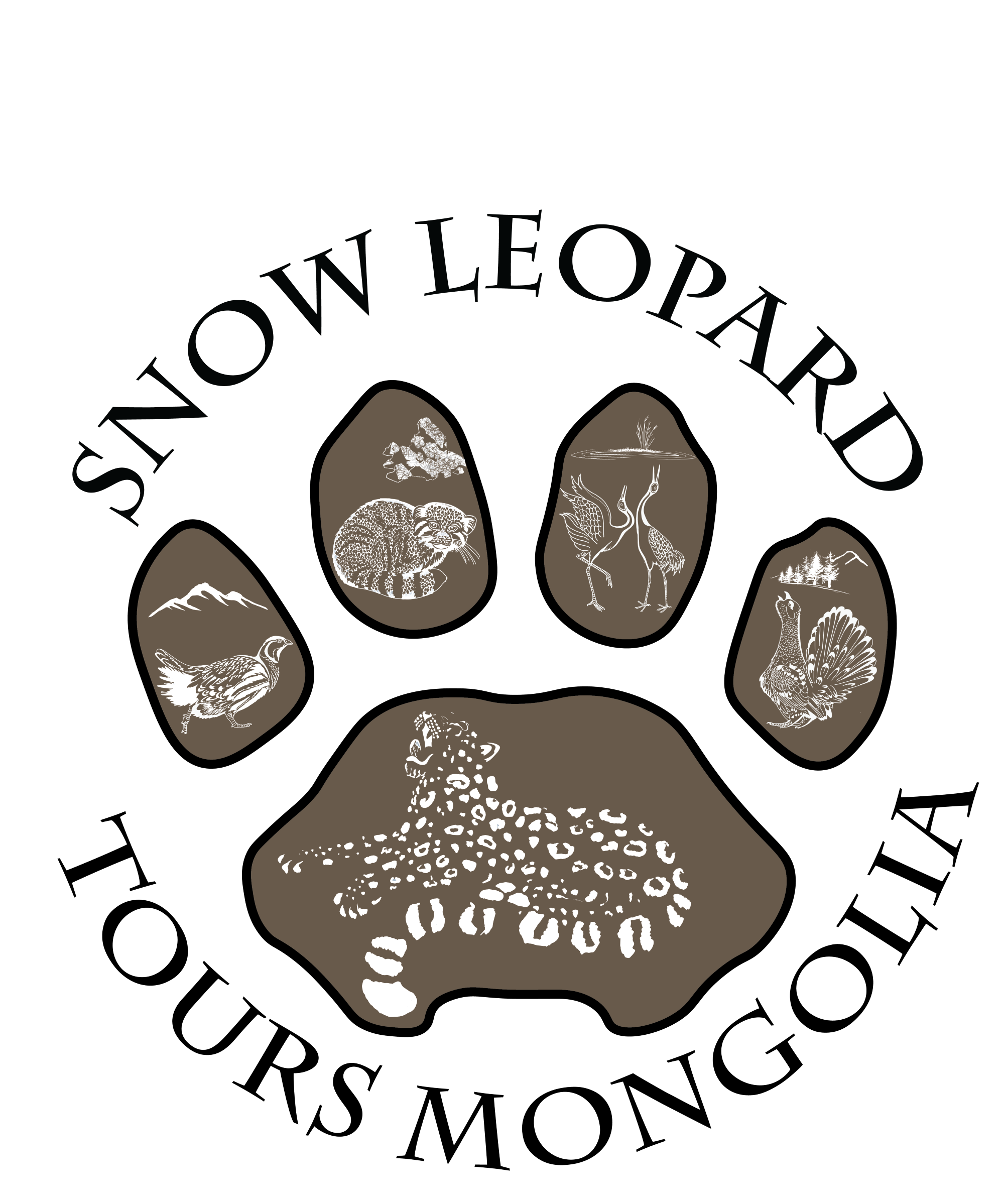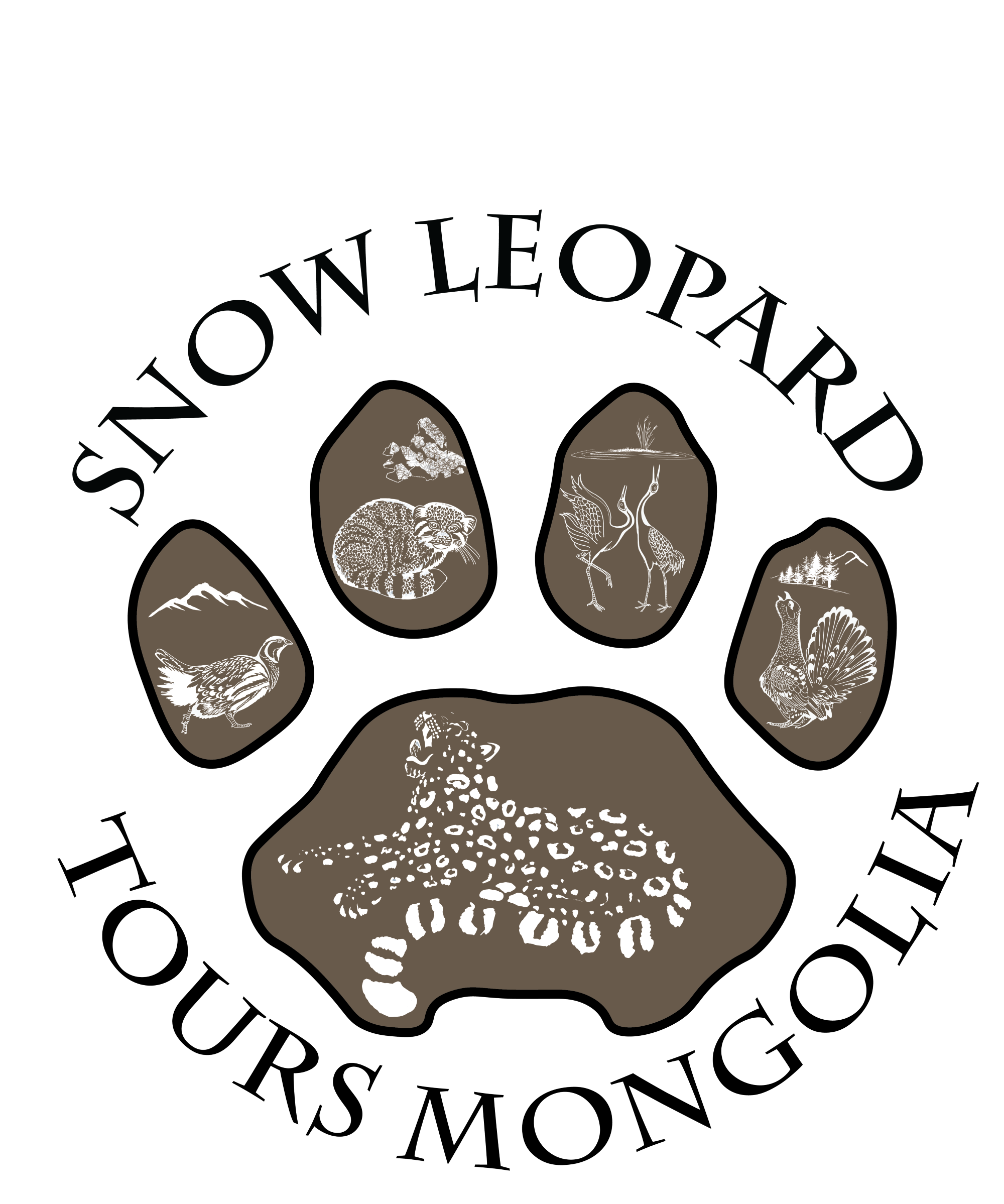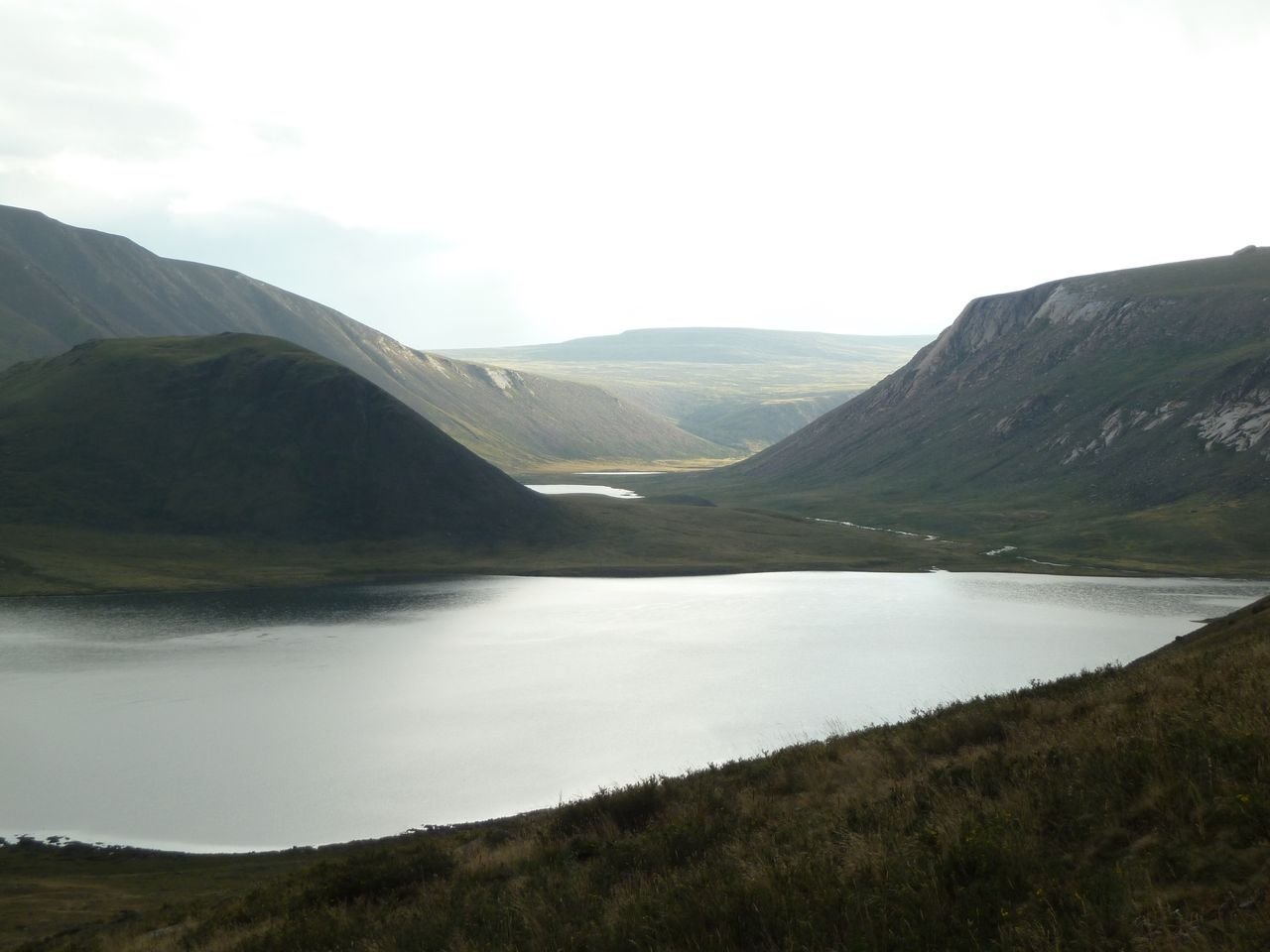This is a trip report of a visit to Khukh lake in Khangai mountain between 19 – 22 July 2012. Initially, we visited the site in the summer of 2011 briefly to document the avifauna of the site which subsequently made it to known to other local and foreign birdwatchers. Our discovery of the high mountain avifauna of the Khukh lake and its adjacent area could be first in the country and now the site is one of the most sought-after birding destinations by foreign birders.
Over the few years (2008-11), our group spent most of each July working on a project to study ecology, avian influenza, and physiology of Bar-headed Geese in west-central Mongolia. Our field works in July were primarily focused on capturing, colour marking, and sampling the geese at Terkhiin Tsagaan Lake and several smaller lakes in the region. After the research work was completed, we traveled further west or north to visit a few more unknown lakes and wetlands until the end of moulting season.
Between the destinations, we drove over many mountain passes, usually without stopping in order to save time and to make distances. Whenever we pass high altitude mountains we always wanted to stop and spend more time looking for birds that inhabit alpine habitats. But despite a few short stops, we were not really able to do that because of our limited time budget. However, in 2012, we had some chance to spend a bit more time at several high altitude locations in the Khangai Mountains.
.jpg)
View from Khongor Davaa. © B. Nyambayar
On our way to Khukh lake from Terkhiin tsagaan lake, we camped on top of several mountain passes and high grounds to take advantage of the morning hours to do a quick bird watching. Our first spot on 19 July 2012 was Khongor Davaa, a location elevated at 2310 meters above sea level. Although it was not that high altitude, we were close to the tree line. The mountain top was grassy, and full of low scrubs and rocks. The site was not quite an alpine meadow, but a very good place to search birds. Also, a patch of larch trees and a large rock cliff was present at the nearby hill top. Around 5 a.m., we walked up to the hill to watch birds in the area. In no time, we arrived at the nearest cliff and larch trees. We noticed some birds were flying between them. In those rocky areas and near the cliffs, we saw Brown Accentors (at least two families), Brown Shrikes, Alpine Accentors, Red-billed Coughs, Pied Wagtails, Siberian Stonechat, Yellow and Citrine Wagtails, Tree Pipits, Olive-backed Pipits, Northern Wheatears, Pied Wheatears, Black Redstarts, Red-throated Thrushes, Willow Tits, Lesser Whitethroats, Common Rosefinches, and Pine Buntings. In the larch forest patch, we saw more forest species including Tree and Olive-backed Pipit, Lesser Whitethroat, Willow Tit, Great Tit, Pine Bunting, and a family of Magpie. Also, a Golden Eagle flew very close to us to the west.
.jpg)
Alpine Accentor. © N. Tseveenmyadag
Our next high mountain stop was Shar Usnii Davaa mountain pass (2820 m). We arrived at this location just before midnight and found a perfect little spot to put our tents. Basically, we were camping at the source of Zavkhan River, at one of its headwaters. In 2011, we encountered a Grey Wolf on this pass while driving in the night.
Early morning, we climbed up to a nearby hilltop. There were not many birds except a few Horned Larks and Brown Accentors. An Upland Buzzard was flying to north over the pass. Four Common Ravens were foraging at the ovoo near the pass. Also we saw some Water Pipits (ssp blakistoni) near the stream. On top of the hill, two Steppe Eagles were perching on a medium sized boulder. Siberian Marmots were quite high in abundance and a Red Fox was seen on its early morning hunt. From the hilltop, we could see that the area is a high altitude steppe in general with little or no big boulder rocks, bushes, and trees. Grass and forbs were not as high compared to how they were last year around this time. Soon some light rain started, and we had to go back.
After crossing the Shar Usnii Davaa on the way to the next destination, we reached another small tributary of the Zavkhan River. Just before we hit the river (at 2500 m a.s.l), Père David's Snowfinch started to be seen on the southern part of the river. Also, an adult Lammergeier (Bearded Vulture) was feeding on a carcass of a ram. Soon another adult and subadult Lammergeier joined him.
.jpg)
Shar Us Davaa. © N. Tseveenmyadag
Our third stop was Khukh Lake, a fresh water mountain lake, located at an elevation of 2630 meters. This is the location where we saw alpine meadow and alpine steppe habitats lying side by side. Alpine flora was distinctive as well. We were here last year for a very short time and did not do much bird watching. In fact, the very reason we came here was to find Bar-headed Geese that are carrying heart rate loggers deployed last year. We saw one of them at this location in July 2011. They are easily identified by their neck collars. Also, there were over 1000 geese in this area last year, most of them moulting birds.
.jpg)
Evening view of Khukh Lake. © B. Nyambayar
A small island located south side of the lake hosted many Mongolian Gull nest and it looked like the best place where the Bar-headed Geese breed. We counted over 400 Mongolian Gulls and about 200 Great Cormorants on the island and about 60 Bar-headed Geese on the water. We did not see any cormorant nest or chicks.
Shortly after our arrival, we made a stop at the northern foothills of Zavag Mountain. The area was very interesting with a diversity of microhabitats, with bushes, dwarf birches, and rocks. Soon we were overwhelmed by a sheer abundance of several mountain species including Güldenstädt’s Redstart, Asian Rosy Finch, Stejneger’s stonechat, Black Redstart, Brown Accentor, Twite, Grey Wagtail, and Citrine Wagtail. Recently fledged Güldenstädt's Redstarts and Brown Accentors were all over this tiny place and both male and females were feeding their youngsters.
.jpg)
Khukh Lake from above. © B. Nyambayar
After early dinner, we climbed the north side of Ondor-Jargalant Uul up to 3118 meters that evening. But it was too late to do more exploration; and we decided to spend next day to check out this beautiful location. That day, we camped on northern shore of the lake (2646 m). Here, we were desperate to see Hodgson’s Bushchat, but we were not that lucky and saw none.

Male Stejneger’s stonechat © E.Bolormunkh
But the place was full of Stejneger’s Stonechats and Blyth’s Pipits. Brown Accentors were very common again, with recently fledged chicks. Actually, the weather was not very perfect all afternoon with occasional light showers; sometimes we had to sit under big bushes and banks to wait for the heavier rain to pass through. On the way back, Tseveen and Bolormunkh saw two Siberian Ibex and a small flock of Altai Snowcocks. Also we saw Twite, Hume’s Leaf Warbler, Water Pipits, Pallas’s Bunting ssp lydiae (2 families), Pied Wagtails, and a Willow Ptarmigan (one flushed) near the stream.
.jpg)
Adult Asian Rosy Finch Leucosticte arctoa, ssp sushkini, endemic to Mongolia’s Khangai Mountains. © N. Tseveenmyadag
.jpg)
Juvenile Asian Rosy Finch Leucosticte arctoa ssp sushkini. © N. Tseveenmyadag
These are probably the first-ever published photos of the distinct sushkini subspecies of Asian Rosy Finch which was described by the Russian ornithologist Boris Karlowitsch Stegmann in 1932, based on a specimen collected in 1929 by Elizabeth V. Kozlova at Otgontenger, the highest (4031 m) mountain of the Khangai range. The scientific name honors the Russian ornithologist Petr Petrovich Sushkin (1868-1928).
The next morning we checked the remaining lakes for Bar-headed Geese with data loggers. This year, we counted again almost 1100 geese including many families, with 98 goslings in total. So, we spent a good deal of time walking along the lakes and hillsides watching birds and other things. We made several stops and recorded bird species observed there.
First, we decided to walk upstream to see the beginning of the lake and possibly to find more Bar-headed Geese. Also, it would allow us to walk along the lakeshore with occasional boulder rocks, many scrubs and bushes which are ideal habitats for passerines. Soon after we left the camp, Baganaa decided to challenge himself by climbing one of the steepest hillsides and he left us.
Tseveen, Bolormunkh, and Nyamba continued walking up the valley. Among bushes and scrubs along the lakeshore and lower foothills, Brown Accentor, Black Redstart, Northern Wheatear, Twite, Hume’s Leaf Warbler, Grey Wagtail, White Wagtail, Citrine Wagtail, Northern Wheatear, Stejneger’s Stonechats and Blyth’s Pipit were fairly common. Also, we recorded a male Pallas’s Bunting, a family of Common Rosefinch, a Daurian Partridge, and a grouse (the bird flew off before we could identify it). Near the upper end of the lake, we spotted one of each Little Ringed Plover and Common Sandpiper running along lakeshore. In general, there were not many shorebirds in this area.
Later afternoon, we added to our species list a single Common Rock Thrush and Altai Accentor which were spotted below a rocky hillside with some bushes, and Northern House Martins in the cliff above us. In nearby rocky and bushy slopes and hillsides, we saw more Stejneger’s Stonechats, Brown Accentors, Northern Wheatears, Greenish Warbler, and Magpies.
.jpg)
Güldenstädt’s Redstart. © B. Nyambayar
During our one and a half day-stay at Khukh Lake, we found several nests of raptors including Bearded Vulture (1 nest), Cinereous Vulture (2 nests), Steppe Eagle (1 nest), and Saker Falcon (1 nest). Also we saw a pair of adult Golden Eagles flying back and forth along a mountain ridge at south. Soon a Common Kestrel appeared and started mobbing one of them. Interestingly, we didn't see any Black-eared Kites during our stay; also we don’t remember seeing them in 2011 as well. Perhaps, they do not occur here at this altitude.
We came back to the camp at around 4 pm. Our last stop was a rocky foothill on the opposite side of the lake from our camp. We radio called Baganaa and our driver and asked them to bring kayaks to us. So they did. Soon we were paddling across the lake on our way back to the camp. At the camp, Baganaa showed us the photos he took during his trekking that day. Among them, there was a photo (rather poor quality) of a bird which looked like a Hodgson’s Bushchat! Later we sent the photo to Axel and Abu for confirmation, and the reply was positive. Yes, it was a male Hodgson’s Bushchat! This is the species we were looking for the whole day, but we did not find it, perhaps, we were too attached to the lake. The good thing was that Baganaa got this photo and his decision to challenge himself rewarded all of us in the end!

Record shot of the male Hodgson’s Bushchat.© Mongonbagana
.jpg)
Male Pallas’s Bunting.© E.Bolormunkh

Our camp at the base of Ondor-Jargalant Uul. © B. Nyambayar
On our way back, we drove over small hills on the north side of the lake to check a few smaller lakes. They were brackish water lakes and many of them were very low water or dry. We made few stops and recorded the following species, Bar-headed Goose (105), Ruddy Shelduck (1 family with 10 ducklings), Common Pochard (c.100), Tufted Duck (c.90), Common Goldeneye (23), and two Spotted Redshanks (at 2774 m.a.s.l).
In addition to birds, we observed the following species of mammals at Khukh Lake: Siberian Ibex (9 individuals), Argali Sheep (single sheep, status unclear), and Siberian Marmots (at 3000 m), Pallas’s and Northern Pikas, Tolai Hare (at 3000 m), and some mountain blue voles (Alticola sp or Allocricetulus sp; regular). Occasionally, we encountered Grey wolf scats, full of fur.
Before we left the lake, we stopped by the family we met the day before, and Nyamba bought some fresh dried curds made out of yak milk to take back to US for his family. The husband, Munkhbaatar, told us they stay in the area year around and in winter they move further up the valley with their yaks. His wife works for the local meteorological office and takes lake water measurements every day. He also told us in summer few local tourists visit this place, and their number is increasing. We all certainly felt that this place deserves a designation of local or state level protected area.
.jpg)
Small island at Khukh Lake with a gull colony. © B. Nyambayar
Anyway, at the end, it was a very fruitful short visit for all of us because we completed our original goal which was to count Bar-headed Geese at this location, plus we did some bird watching in one of the best locations in this area with many beautiful montane species. Totally 45 species were recorded. Although our short trip to this location resulted in many interesting species not much reported from Mongolia, everybody was saying that they are keen to come back to this location and spent more time next year. Because avian species in high mountain habitats in Mongolia are very poorly documented, I am sure there will be plenty of things to do in such beautiful places. Especially, we want to see that Hodgson’s Bushchats up close. Perhaps you might want to join us.
List of species recorded at Khukh Lake
Birds:
Great Cormorant Phalacrocorax carbo. A non-breeding congregation with over 200 birds.
Bar-headed Goose Anser indicus. A total of 1200 recorded, including breeding pairs. Maximum gosling in one family were 6.
Northern Shoveler Anas clypeata. 2 birds in summer plumage.
Tufted Duck Aythya fuligula. Over 110 non-breeding birds at the small lake N of Khukh Lake.
Common Pochard Aythya ferina. Over 100 non-breeding birds at the small lake N of Khukh Lake.
Common Goldeneye Bucephala clangula. 23 birds at the small lake N of Khukh Lake.
Goosander Mergus merganser. 1 female with 8 juveniles.
Golden Eagle Aquila chrysaetos. A pair of adults at the south side of the lake.
Lammergeier Gypaetus barbatus. 2 adults and a subadult near the river feeding on a carcass. A nest with a large juvenile at Khukh lake.
Eurasian Black Vulture Aegypius monachus. At least two nests at the south side of the Lake. There might be few more nests.
Saker Falcon Falco cherrug. At least one nest. Recently fledged young birds were calling on a nest located in a high cliff.
Common Kestrel Falco tinnunculus. An adult female. This bird might have nested in the area.
Rock Ptarmigan Lagopus muta. A solitary bird was flushed out from densely vegetated shrubs near swift-flowing stream. Rather rare in the area.
Willow Ptarmigan Lagopus lagopus. A single bird was flushed.
Altai Snowcock Tetraogallus altaicus. Six individuals were seen at mountain top and we heard the calls quite often.
Daurian Partridge Perdix dauurica. One got flushed.
Little Ringed Plover Charadrius dubius. One individual was recorded.
Common Sandpiper Actitis hypoleucos. One individual was recorded.
Spotted Redshank Tringa erythropus. Two birds in summer plumage at the small lake N of Khukh Lake.
Mongolian Gull Larus mongolicus. Over 400 birds including many breeding pairs
House Martin Delichon urbicum. Many were seen at the upper part of the lake.
Horned Lark Erepmophila alpestris. Commonly seen.
Richard’s Pipit Anthus richardi. Many sighted.
Blyth’s Pipit Anthus godlwskii. Very common and highly vocal.
Water Pipit Anthus spinoletta blakistoni. A regular bird of alpine meadows.
Common Magpie Pica pica. Found in larch forest.
Citrine Wagtail Motacilla citreola. Regular.
Pied Wagtail Motacilla alba. Several sightings of this well-known species mainly near wet areas.
Grey Wagtail Motacilla cinerea. Rather uncommon.
Altai Accentor Prunella himalayana. Only 1 bird was recorded.
Alpine Accentor Prunella collaris. Few individuals were noted.
Brown Accentor Prunella fulvescens. Probably the most common bird species in Khukh lake area.
Greenish Warbler Phylloscopus trochiloides viridianus. Found in the willow groves along the mountain stream and valleys.
Hume’s Leaf Warbler Phylloscopus humei. Same habitat as Greenish warbler.
Stejneger's stonechat Saxicola stejnegeri. Noted every day. Fairly common.
Hodgson’s Bushchat Saxicola insignis. One record shot. None in the foothills. Higher grounds need to be searched carefully.
Northern Wheatear Oenanthe Oenanthe. A few observations only.
Common Rock Thrush Monticola saxatilis. Single record.
Black Redstart Phoenicurus ochropus. Breeding.
Güldenstädt's Redstart Phoenicurus erythrogastrus. Nice view of several breeding pairs feeding their youngsters.
Red-throated Thrush Turdus ruficollis. A single adult.
Twite Acanthis flavirostris. One of the most common species in the area. Mainly found in lower area along the lake and streams.
Asian Rosy Finch Leucosticte arctoa sushkini. We had good views several breeding pairs feeding their youngsters in the southern foothill.
Common Rosefinch Carpodacus erythrinus. Two families with juveniles.
Grey-necked Bunting Emberiza buchanani. A single bird in breeding plumage.
Pallas’s Bunting Emberiza pallasi lydiae. Several fabulous looks at singing males on shrubby areas.
Mammals:
Mongolian Silver Vole Alticola semicanus. Not very abundant. Several records.
Alpine Pika Ochotona alpina. Seen regularly in the boulder fields.
Long-tailed Ground Squirrel Spermophilus undulatus. A few sightseeing. Perhaps we may have overlooked.
Siberian Marmot Marmota sibirica. One of the most common mammal species at higher elevations.
Tolai Hare Lepus tolai. Several observations in the boulders and bushes.
Siberian Ibex Capra sibirica. Total of 9 ibexes were seen second day.
Argali Ovis ammon. Single sheep was noted in the evening when we arrived at the lake.




